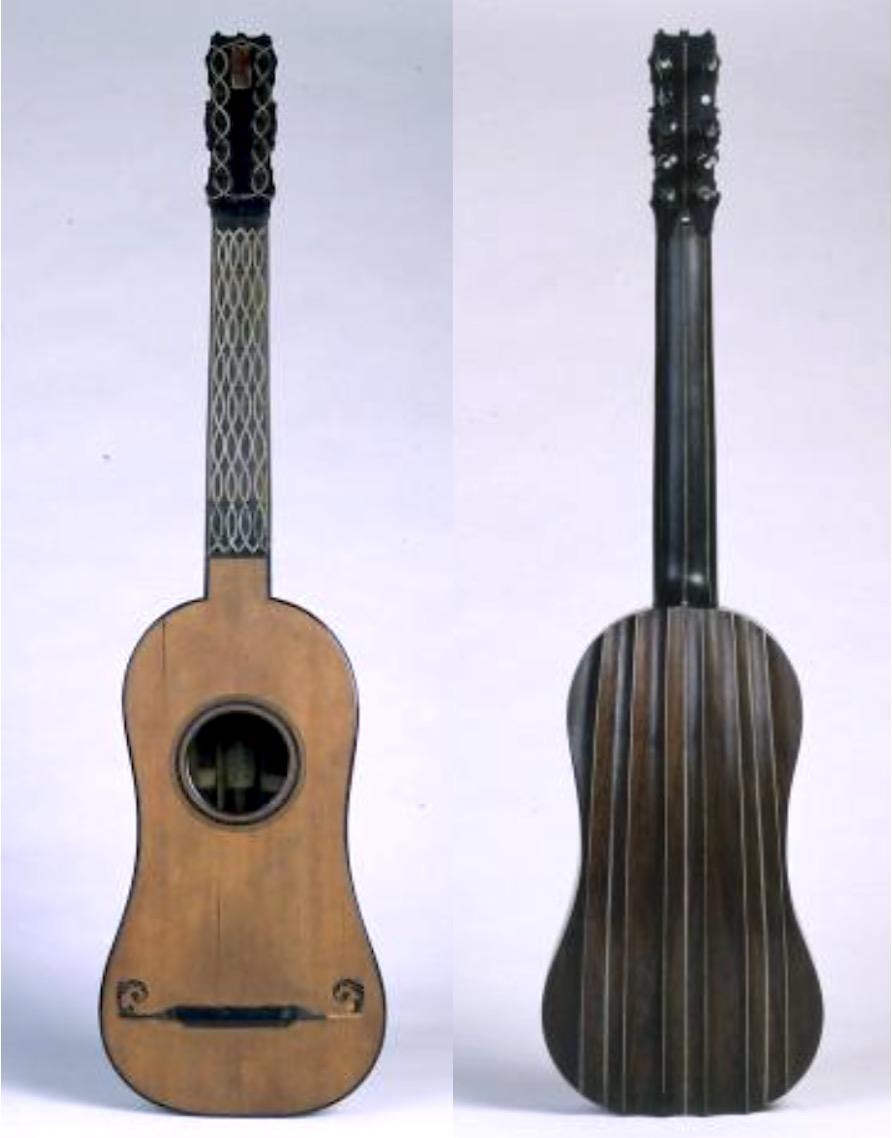Vihuela or guitar, Belchior Dias
(1581) - London: Royal College of Music.
instrument: vihuela de mano | century: 16cent/3/late | catalogue nº: 16-306

Artwork
Creator Dias, Belchior
Medium Instrument
Location
City Lisbon London | Region Portugal | Old kingdom Portugal
Characteristics
| Body Waisted | Strings 4 courses | Neck Long | Pegbox Angled flat |
| Bridge Fixed | Frets Yes | Back Vaulted | Pegs Rear |
| Technique |
Commentary
INSTRUMENT
This instrument, a vihuela or guitar, built in Lisbon in 1581 by Belchior Dias, is held in the collection of the Royal College of Music, London, inventory number RCM0171
With an outline tht shows clear evidence of having been designed using proportional geometry, it is a small instrument, waisted with the upper bouts narrower than the lower bouts. It has a vaulted back of fluted ribs, single rose, and indented waist. Overall length = 765 mm, String length = 554, Body length = 366, Body width: upper bout=165; waist =145, lower bout =200mm, Depth: upper bout = 40, waist = 65, lower bout = 50. The present soundboard and bridge appear not to be original. Carlos González reported (e-mail 29/08/2002) that luthier John Topham had conducted an dendochronological analysis of the soundboard that showed the most recent growth ring to date from about 1730.
For many years it was considered to be a 5-course guitar but more recent research by Alexander Batov revealed an eleventh peg hoe, thus indicating that it could have been a 6-course vihuela Batov’s detailed investigation is available at http://www.vihuelademano.com/rcmdias.htm (accessed 24/03/2018). Alexander Batov indicates in an email to John Griffiths (29 March 2004): "My own recent examination of this instrument (the collection was re-opened to visitors in the end of February after a long break due to construction work with the building) revealed some important features which were previously overlooked: the remains of original bar end supports (which would help to locate more precisely the original position of the soundhole!) and sliced (two-layer) construction of the fingerboard are just among the few. In addition to those, there is a strong possibility that this instrument was either converted or originally built as a 6-course vihuela (with 1x1 + 2x5 courses of strings). The hole along the centre line of the peghead, just behind the nut, is provided for 11th peg (see attached image)". Batov’s arguments are available on his website http://www.vihuelademano.com/index.html. They have been refuted by Stephen Barber at his website http://www.lutesandguitars.co.uk/htm/cat11.htm [accessed 1/2/2005]. A similar instrument (photograph in Evans Guitars) possibly by the same maker was in the collection of Robert Spencer, and now in the collection of Frank Koonce. See 16-307.
Reproductions
http://www.mimo-international.com/MIMO/doc/IFD/MINIM_UK_9284